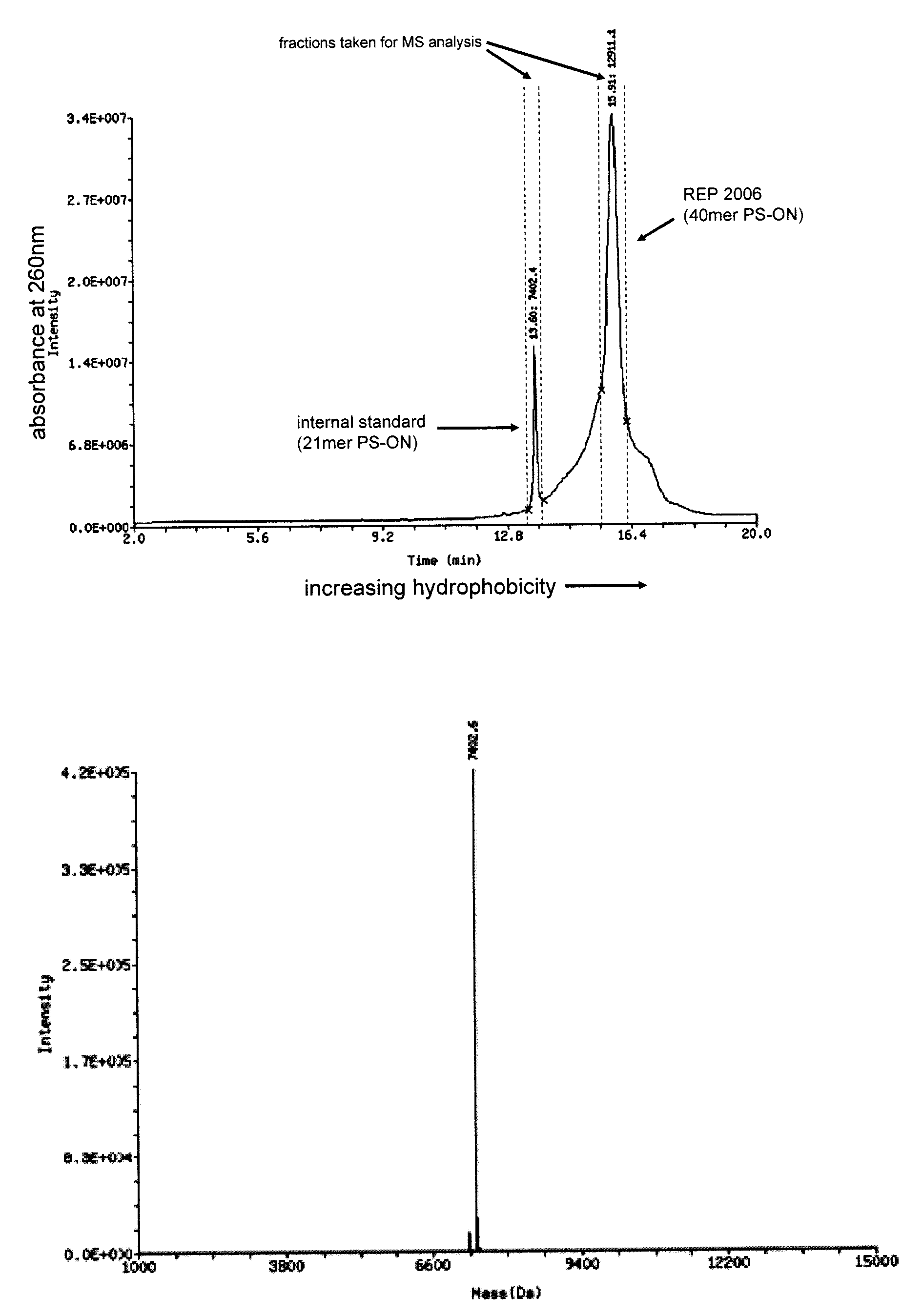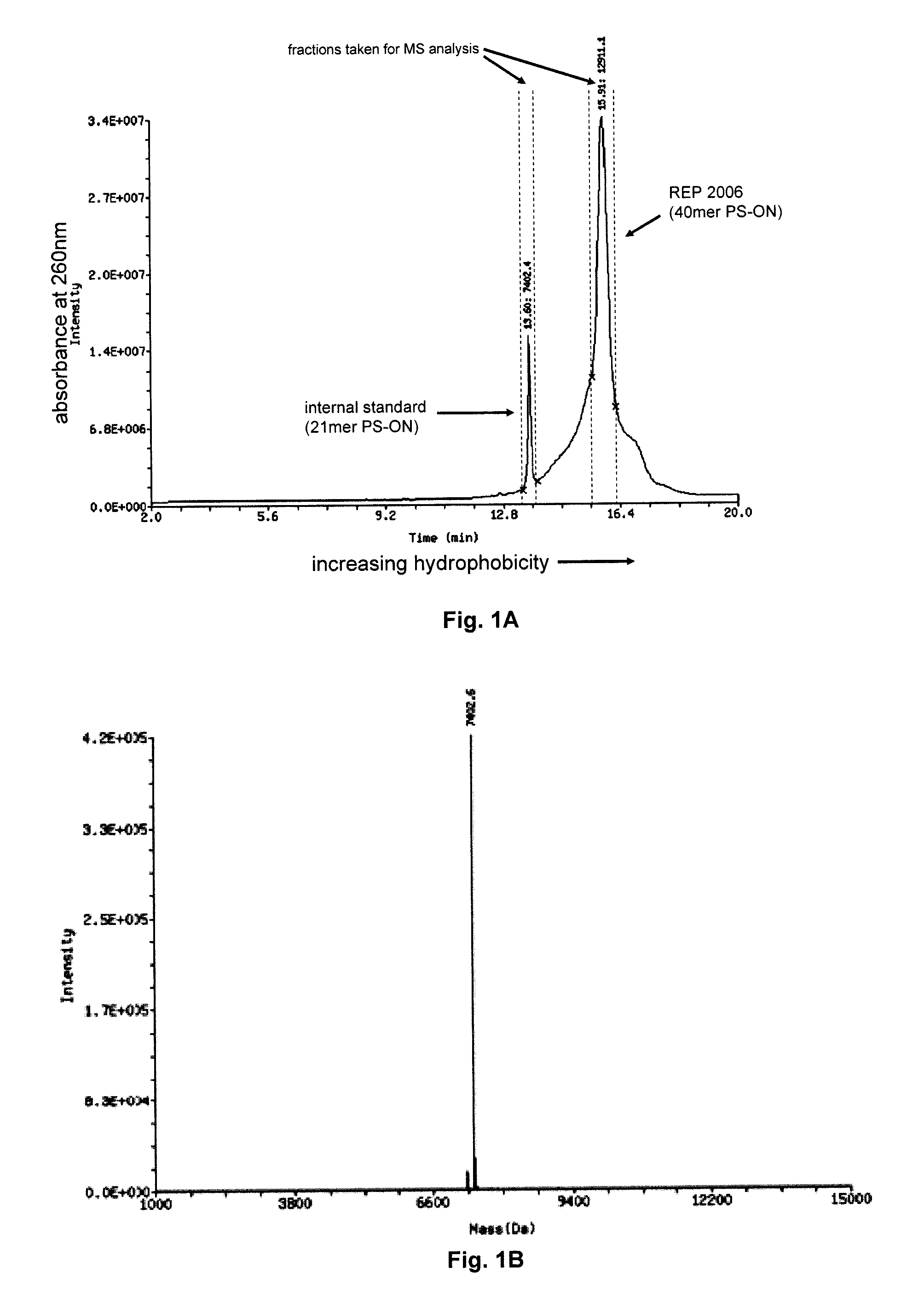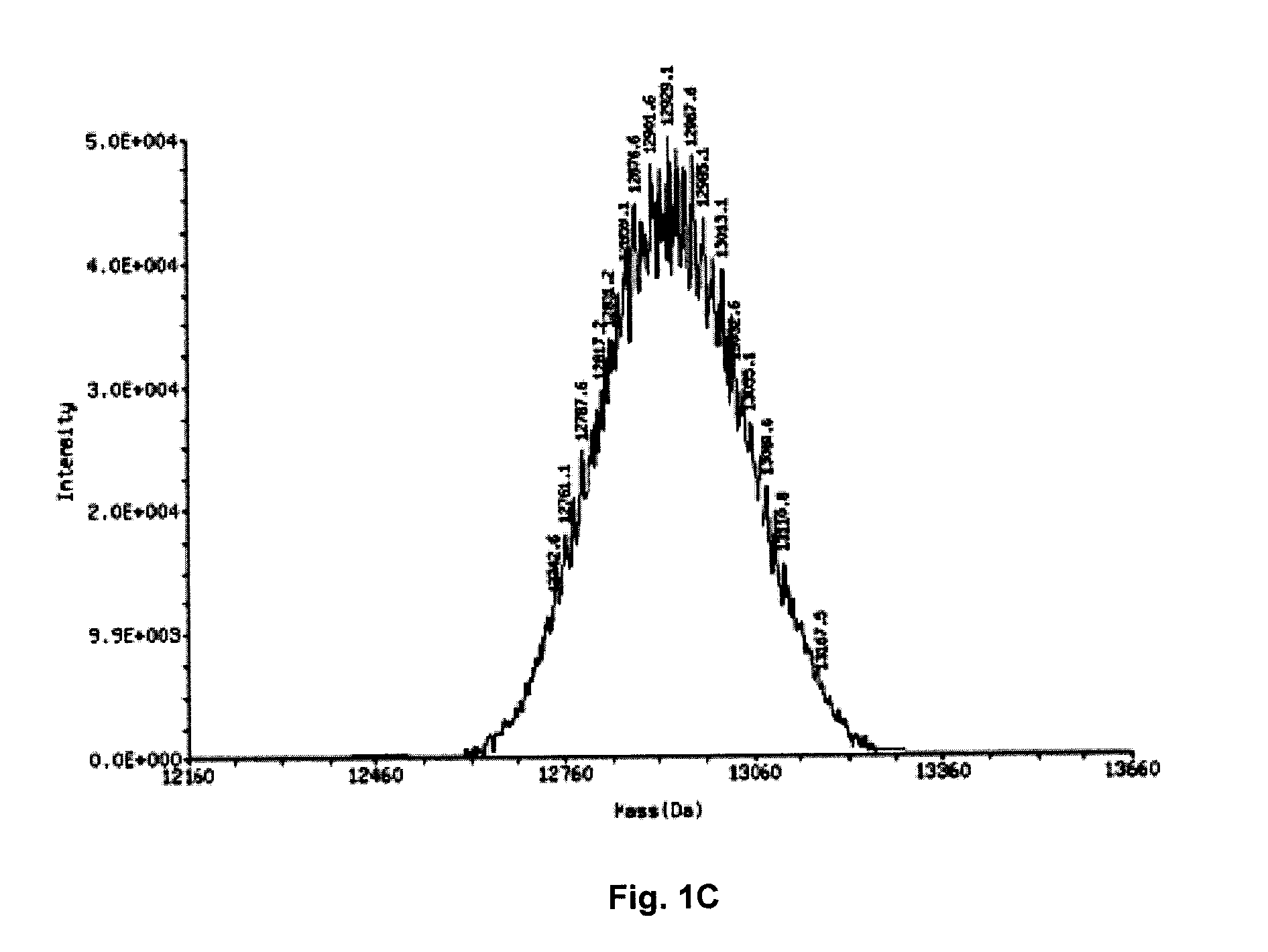Oligonucleotide chelate complexes
a technology of oligonucleotide and complexes, which is applied in the field of oligonucleotide chelate complexes, can solve the problems of limiting the achievable dose and local inflammation at the injection site, and achieve the effects of reducing the anti-coagulation effect of the oligonucleotide administration, suppressing or reducing the reaction at the injection site, and improving the tolerability of the oligonucleotid
- Summary
- Abstract
- Description
- Claims
- Application Information
AI Technical Summary
Benefits of technology
Problems solved by technology
Method used
Image
Examples
example i
Characterization of Degenerate ON
[0110]FIG. 1A details the separation by HPLC (using a hydrophobic column) of two oligonucleotide preparations which are co-injected into the column at the same time. The first of these is called the internal standard and is a 21 mer phosphorothioate oligonucleotide with a specific defined sequence, the second is REP 2006 (a 40 mer degenerate phosphorothioate oligonucleotide). Both of these species separate into distinct defined peaks based only on their physiochemical properties (i.e. size and hydrophobicity); the sequence of nucleotides present in each of these ONs has NO meaningful impact on their physiochemical properties and therefore has NO impact on their separation. As such, the internal standard elutes off the column as a tightly defined peak with smaller retention time as compared to REP 2006, only due to the difference in the size of these two ON polymers. Note that the shoulders on either side of the REP 2006 peak are due to failure sequen...
example ii
ONs Form Chelate Complexes with Diverse Divalent Metal Cations
[0112]The interaction of oligonucleotide ammonium salts with various divalent metal cations was examined by fluorescence polarization (FP) as described above. During oligonucleotide synthesis, each oligonucleotide was conjugated to fluorescein isothiocyanate (FITC) at the 3′ end by a rigid 3 carbon linker using well established reagents and synthesis protocols. These oligonucleotides were cleaved from the synthesis and left as ammonium salts. The oligonucleotides used in this example are described in Table 1.
TABLE 1ONs used in Example 1OligonucleotideSequence (5′ - 3′)ModificationsREP 2032-FLN6PSREP 2003-FLN10PSREP 2004-FLN20PSREP 2006-FLN40PSREP 2107-FLN40PS + 2′ O MeREP 2086-FLN402′ O MeREP 2031-FLC40PS(SEQ ID NO: 4)N = degenerate sequence (random incorporation of A, G, C or T)PS = phosphorothioation at each linkage2′ O Me = 2′ O methylation at each ribose
[0113]The 3′ FITC labeled oligonucleotides used were REP 2032-FL ...
example iii
ONs Form Chelate Complexes with Different Salts of Calcium and Magnesium
[0131]In order to further demonstrate the universal nature of ON chelate complex formation and to also demonstrate the utility of different salts of divalent metal cations in the formation of ON chelate complexes, two different forms of calcium and magnesium salts were used to prepare diverse ON chelate complexes with ONs of different specific sequences. The salts used were calcium chloride, calcium sulfate, magnesium chloride and magnesium sulfate. The ONs used are listed in Table 2 below. FP reaction conditions were identical to those in Example 1 except that EDTA was omitted to demonstrate the formation of ON chelate complexes in the absence of any EDTA-mediated effects.
TABLE 2ONs used in Example 2OligonucleotideSequence (5′ - 3′)SEQ. ID NO.ModificationsREP 2055-FL(AC)20 6PSREP 2056-FL(TC)20 7PSREP 2033-FL(TG)20 5PSREP 2029-FLA40 2PSREP 2028-FLG40 1PSREP 2057-FL(AG)20 8PSREP 2120-FLN40NAPS(C = 5′ methylcytidi...
PUM
| Property | Measurement | Unit |
|---|---|---|
| concentration | aaaaa | aaaaa |
| volume | aaaaa | aaaaa |
| pH | aaaaa | aaaaa |
Abstract
Description
Claims
Application Information
 Login to View More
Login to View More - R&D
- Intellectual Property
- Life Sciences
- Materials
- Tech Scout
- Unparalleled Data Quality
- Higher Quality Content
- 60% Fewer Hallucinations
Browse by: Latest US Patents, China's latest patents, Technical Efficacy Thesaurus, Application Domain, Technology Topic, Popular Technical Reports.
© 2025 PatSnap. All rights reserved.Legal|Privacy policy|Modern Slavery Act Transparency Statement|Sitemap|About US| Contact US: help@patsnap.com



